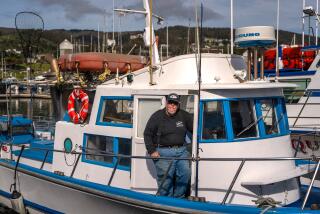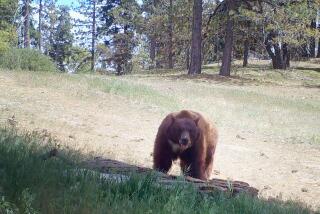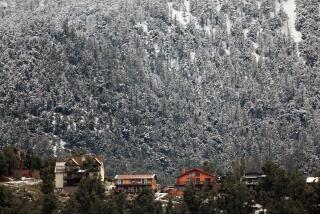Bears attracted to spawning salmon attract tourists to Tahoe’s Taylor Creek
LAKE TAHOE — Under a golden canopy of quaking aspen, red Kokanee salmon swim up Taylor Creek on the south edge of Lake Tahoe to spawn just as their larger cousins do in the Pacific Northwest and Alaska. In their wake come black bears, merganser ducks and other predators seeking to feed on the passing horde, which is estimated at up to 50,000. At times, it seems as if you could almost walk across the 2-mile-long creek on the backs of the colorful fish. Yet this annual October ritual of nature remains one of Lake Tahoe’s better kept secrets.
The Kokanee are fresh-water salmon and much smaller — measuring only about 14 inches — than other salmon relatives. They feed on plankton in the lake and are silver for most of their lives before turning bright red as they prepare to swim up the creek to spawn in the water where they were born. It is believed that the fish were accidentally released into Lake Tahoe in 1944 when the holding ponds overflowed at the old Tahoe City Fish Hatchery. Planting of the fish in Tahoe’s tributary streams began in 1949 because the small salmon are ideally suited to the cool lake water.
The fishing by black bears is relatively new. Four years ago there was a drought in the Tahoe high country, and the bears started coming down into the basin in search of food. Most of those bears are not really black but a mixture of brown and cinnamon, something fairly common in California. The black bear population in the Tahoe area numbers between 250 and 300.
“The number of fishing bears has been increasing slowly,” said Jean Norman, a U.S. Forest Service veteran who leads walking tours out of the visitor center near Taylor Creek. “It took time for the bears to figure out that the salmon are a food source. Actually, the spawning fish taste bad. So the bears grab the salmon and eat the roe but not the flesh. One by one they figure it out and keep the good-tasting eggs while rejecting the rest.”
Interestingly, only the female bears are successful at catching the salmon, and they teach their cubs to fish. It is funny to watch a male bear in the creek splashing around trying to catch a fish, finally giving up in disgust.
The Forest Service has designed a walkway along one side of the creek from which it is possible to watch a bear or two approach along the other side, push through the reeds, step into the water and collect a salmon.
The government shutdown has put tours and some area campgrounds on hold for now. But there is a bridge that spans the creek on California 89 where people also can gather to watch the salmon and an occasional bear. The bears are most often seen fishing during early morning hours and mid- to late afternoon.
Because salmon spawning takes place during much of October, Mother Nature provides an excellent bonus for visitors: great fall color. The leaves of the aspen trees transition from green to yellow, orange and red, and are so spectacularly scenic that they can cause traffic jams. Hope Valley along California 88 boasts one of Northern California’s premier fall color displays.
More to Read
Sign up for The Wild
We’ll help you find the best places to hike, bike and run, as well as the perfect silent spots for meditation and yoga.
You may occasionally receive promotional content from the Los Angeles Times.






